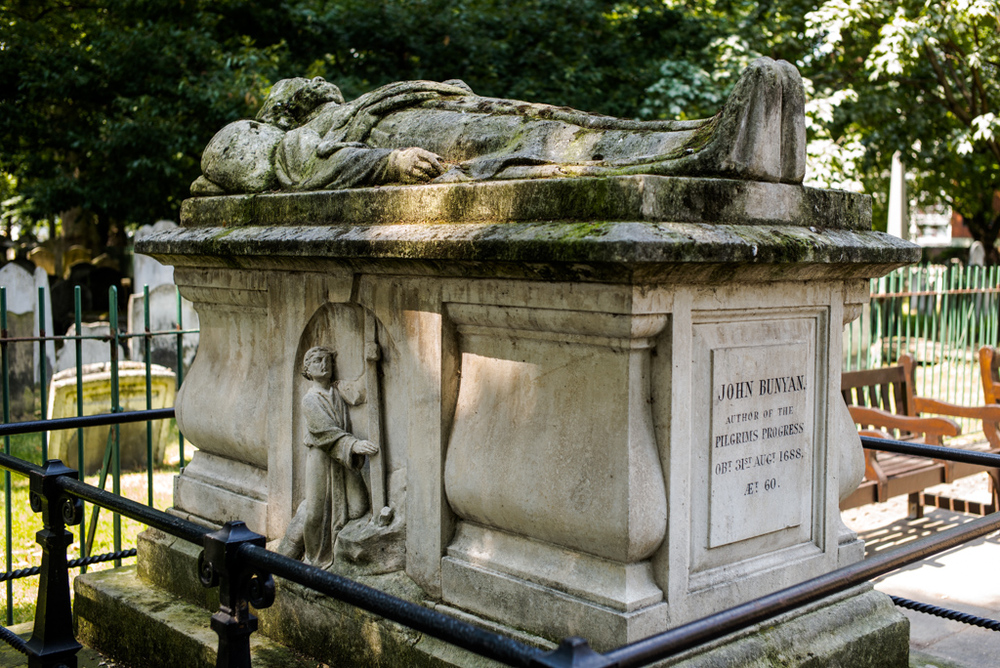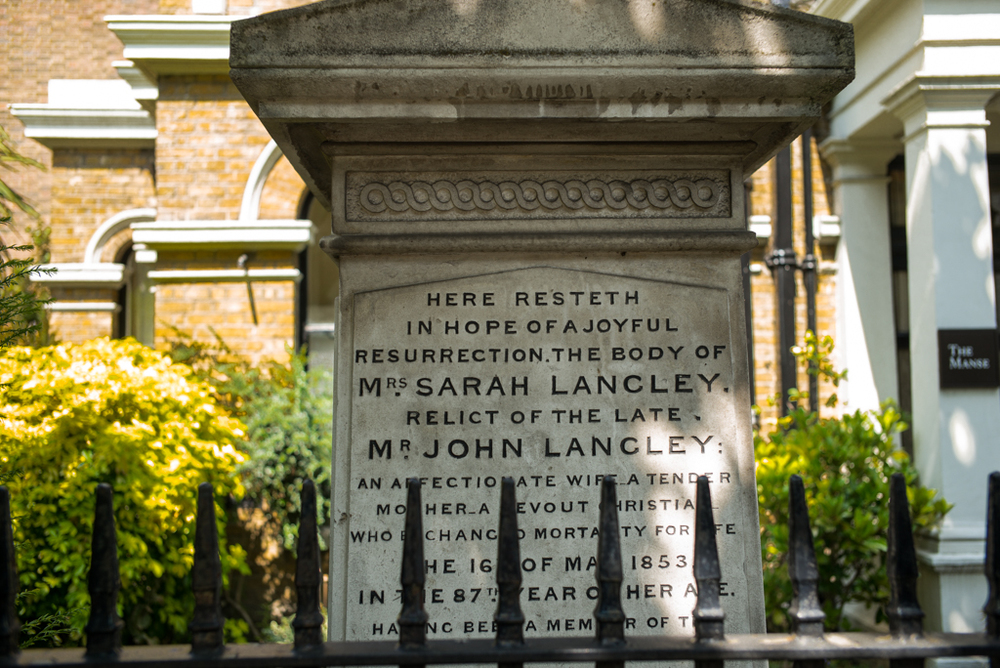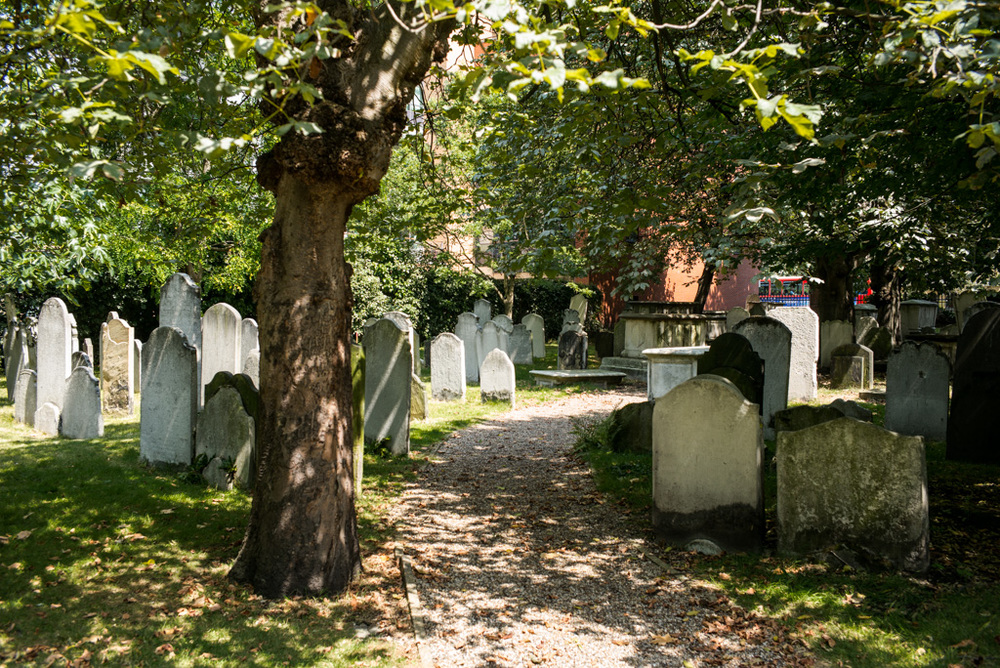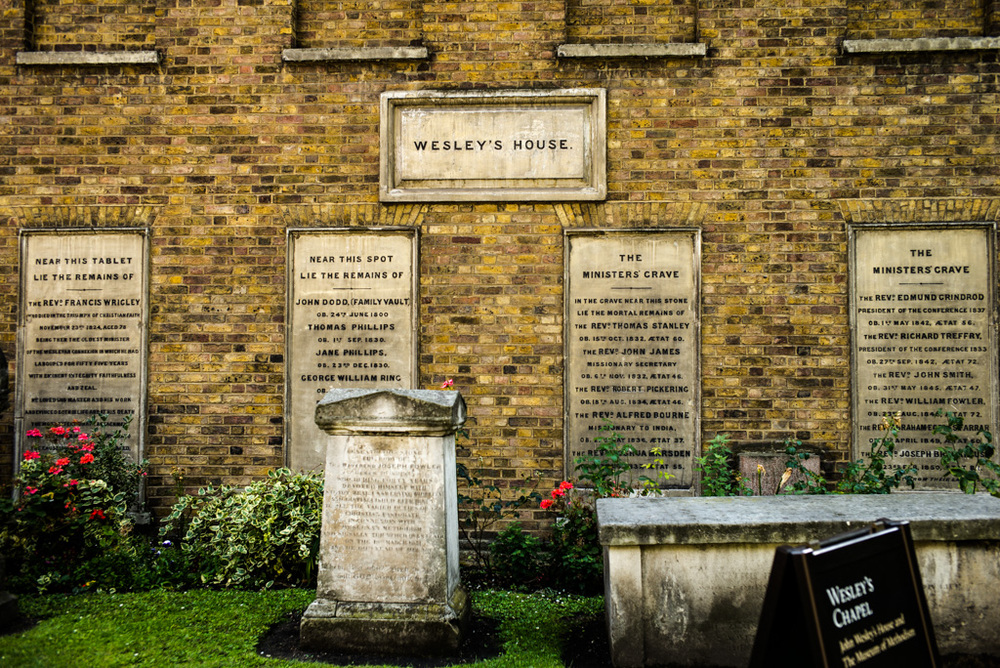
Visitors to Red Dot Cameras, one of the three main independent Leica dealers in London, would do well to stroll a little north with their Leica and experience the tranquility of Bunhill Fields. The ancient burial ground, which was opened in 1665, closed for business as long ago as 1854 after having accommodated 123,000 permanent residents. The name is thought to be a corruption of Bone-hill. The current Bunhill Fields is only a fraction of the original site which had been a cemetery for hundreds of years. There was once a nearby Quaker burial ground which is now a public garden, Quaker Gardens. .
The burial ground has strong links to the nonconformist movement and is immediately opposite the Wesley Chapel and the house of John Wesley. Among the residents burial ground are the authors John Bunyan and Daniel Defoe, and the poet William Blake who wrote the words of the well-known hymn, Jerusalem.
Right across City Road from Bunhill Fields, hard by today’s technology hub of Silicon Roundabout, is the tranquil courtyard of the Wesley’s Chapel, built in 1778 by John Wesley, the founder of the Methodist movement. In the crypt is the Museum of Methodism and next door is John Wesley’s house.


All photographs taken with Leica M and 35mm Summicron ASPH.


